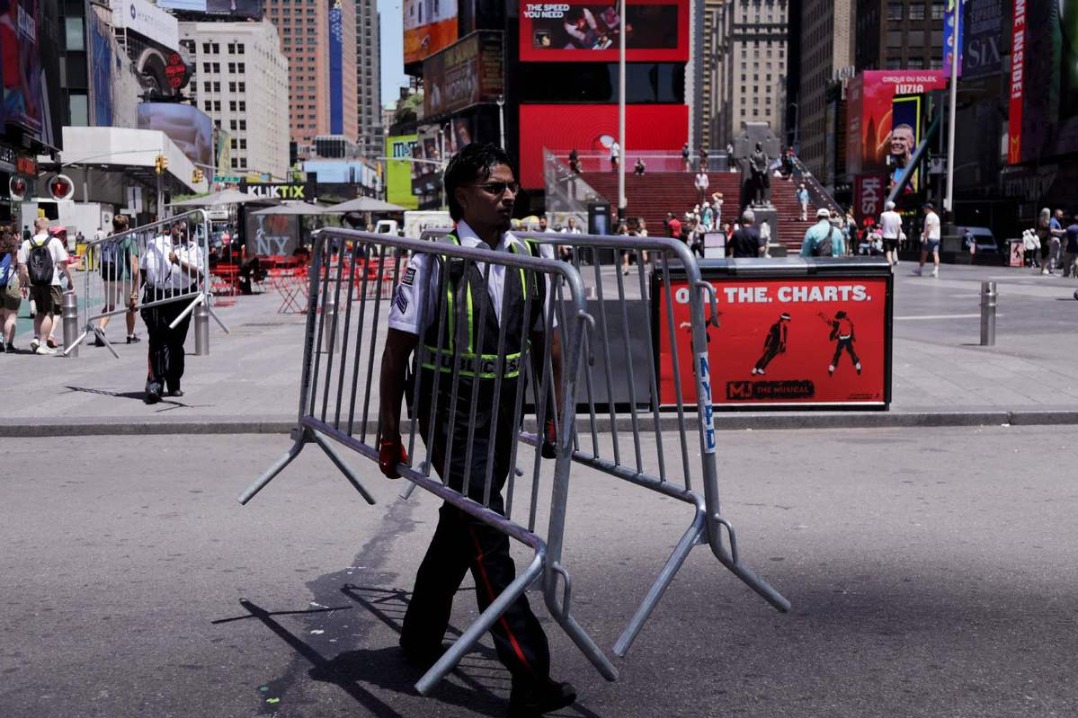Pricey housing forces many people in California into recreational vehicles


Marvin and his family moved into a recreational vehicle, or RV, on a street in Mountain View, California, two years ago, after they could no long afford to pay the rent on their apartment.
The 27-year-old Walmart employee, who gave only his first name, lives with his mother, elder sister, younger brother and his sister's four-year-old daughter in the RV, which has two beds, a sofa bed and a sofa.
Despite the lack of personal space and the noise of trains whizzing by, Marvin said living in the RV is convenient as the family can use bathrooms in a nearby park and shower at a gym. The biggest upside is the RV rental is only $500 a month.
"We can save up more money. I hope we can move into apartment and my niece can go to a kindergarten," he said.
Dozens of camper vans and RVs are parked on Crisanto Avenue. Some are in a dilapidated state. A van, its windows not fully covered, is packed with so many items that one can hardly imagine there's any living space left.
People living in RVs on Crisanto Avenue and on other streets in several California cities are fallout from the state's lack of affordable housing. California has the nation's highest home prices and the highest state poverty rate once housing costs are figured in, according to officials.
Some occupants have been priced out of renting an apartment or house or were forced to move out of their homes.
Maria, a woman in her 60s, recently became an RV resident after losing her job in a nursery due to knee problems.
"Her husband still works at the nursery. She relies on her husband now. I also take care of her sometimes," Rosario, Maria's niece, told China Daily, as Maria doesn't speak English.
Rosario, who preferred to be identified by first name only, said most of the RV dwellers are experiencing similar situations. What makes the situation difficult is that they are often forced to move their vehicles by police or get parking tickets, she said.
A similar scene is found on Church Street, outside Eagle Park, about a 30-minute walk from Crisanto Avenue.
Many other cities in California have reported an increase in people living in RVs, small campers and cars on residential streets, in industrial parks and church parking lots.
California had about 130,000 homeless people as of 2018, according to US Interagency Council on Homelessness. The number is second-highest in state history after the Great San Francisco Earthquake in 1906 left more than 200,000 people homeless.
About three kilometers from the park in Mountain View is Google's headquarters. The tech company with 45,000 employees in the region has been criticized by activists for contributing to rising rents and a housing shortage.
Google and other tech giants such as Facebook and Apple have been urged to address their impact on rents and housing prices. In June, Google announced it would invest $1 billion to develop affordable housing and address homelessness in the region.
In Mountain View, rents have increased 50 percent since 2010, according to a report by activist group Silicon Valley Rising in April 2018. "Unaffordable rents have pushed working people in into the RVs that now line many city streets," says the report.
In Santa Clara County, the center of Silicon Valley, the homeless population has increased 31 percent since 2017 to about 9,706, according to the county's 2019 homeless census and survey.
The survey found 18 percent of respondents staying in a vehicle, a "substantial" increase from previous years. The number of individuals living in RVs, cars and vans has increased 146 percent since 2015, reaching 3,655 individuals in 2019, according to the survey.
People are living in vehicles not just because of high rents but due to financial problems, a preference for vehicle living or long daily commutes, according to a recent report by Palo Alto's Policy and Services Committee.
Safety concerns
The mile-long stretch of El Camino Real, just outside Stanford University in Palo Alto, is lined with vans, RVs and cars. Residents have been complaining about safety, "blight caused by unkempt RVs", sanitation problems and the impact on parking spaces, according to the city's Policy and Services Committee report.
In San Francisco, 1,794 people live in vehicles, which would account for a 68 percent of the rise in the homeless population between 2017 and 2019, according to the city's biennial Homeless Point-in-Time Count released in May.
San Francisco is the most expensive rental market in the US, followed by New York and Boston, according to a June report by San Francisco-based rental platform Zumper. The average rent for a one-bedroom home is $3,700; for a two-bedroom unit, it is $4,720.
In San Jose, the average rent for a two-bedroom apartment is $2,524 a month; in Mountain View, rents for a two-bedroom apartment have reached nearly $4,000 a month as Google aggressively expands, according to the Silicon Valley Rising report.
In the Greater Los Angeles Area, more than 16,500 people live in their cars, vans and RVs in 2019, almost 1,000 more than that of last year, according to the area's homeless count.
The cities, under pressure to get RV dwellers off the street, are launching "safe parking programs". Mountain View has partnered with nonprofit organizations to use a former light rail stop as a parking site for vehicle dwellers. Eventually, it will be the site of an affordable housing project. Palo Alto also is in the process of selecting potential sites.
San Francisco is opening a Vehicle Triage Center near a railway station, which would provide safe parking and basic services - bathrooms, sanitation, and social services - to people living in vehicles.
The proposal by city Supervisor Ahsha Safai met with strong opposition from local residents who consider the RV dwellers a nuisance or an eyesore that brings down the value of their communities.
Those that are living in vehicles are not the "hardcore homeless" that people think about, like drug addicts or mental health issues, said Safai."They are a very different subset of the homeless population," he said.

































